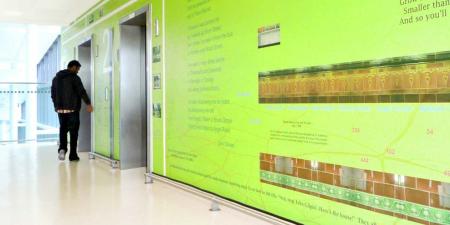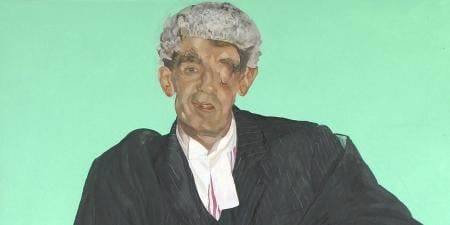Abstract
Background: Current literature on the therapeutic outcomes of youth engagement in active music-based interventions is limited in terms of both the number of studies and methodology. This pilot study combined phenomenology and quantitative measures of self-esteem and self-efficacy to explore the impact of storytelling through lyrical and musical composition on youth self-concept.
Methods: Thirteen youth ages 12 to 16 engaged in a series of 5 consecutive daily music workshops, and themes related to participating in the workshop were identified. Participants also took the Rosenberg Self-Esteem Scale and Sherer General Self-Efficacy Scale before and after completing the workshops, and pre- and posttest scores were compared using t-tests.
Results: Key themes that emerged from the analysis were empowerment and accomplishment. Although the results of the t-tests were not significant, the qualitative data from this pilot study suggest that the workshops had a positive impact on participant self-concept.
Conclusions: These preliminary results could be used to inform further research and to plan active music interventions to positively impact youth mental health.
Introduction
During the teen years, individuals develop a more distinct sense of personal identity and emotional and social independence.1 However, many mental health disorders have their onset during this time.2 Enhancing protective factors and resilience in this age group could reduce the risk for future mental illness.3 Protective factors specific to mental health include physical activity, sleep, social connectedness, self-efficacy, self-esteem, confidence, and economic security.3,4 Because leisure activities account for between 50% to 60% of youths’ time, there is interest in how these activities could be used to protect mental health.5,6,7
Music-based interventions are of particular interest due to music’s integral role in culture and its ability to facilitate reflection, personal expression, and emotional regulation.8 Music therapy has been shown to be beneficial for mental health9; in particular, it has been shown to elicit positive mood changes in adolescent psychiatric inpatients, regardless of gender, diagnosis, or mental health acuity level.10 Other therapeutic outcomes of engaging youth in active participatory music activity include enhanced self-expression and identity, self-concept and self-esteem, and decision-making ability.11,12,13 Moreover, active music-based therapeutic interventions may have greater therapeutic effectiveness in reducing depressive symptoms than receptive methods.14 Nevertheless, such studies are limited in number and focus on clinical settings.15,16
The authors conducted a pilot study that combined phenomenology and quantitative measures of self-esteem and self-efficacy to explore the impact of storytelling through lyrical and musical composition on youth self-concept in the setting of a youth center.
Methods
Participants. Thirteen participants (5 females, 8 males) were recruited through social media and posters at KV Oasis Youth Centre, a local nonprofit organization for youth in Quispamsis, New Brunswick, Canada. All had an interest in music and 3 had songwriting experience: 2 with music and lyric composition and 1 with writing rap lyrics. Two individuals did not participate in postworkshop data collection. Consent was obtained prior to participation.
Design. A pretest-posttest design was used in which quantitative measures and qualitative focus group data were collected before the first workshop and after the last workshop.
Intervention. Participants took part in a series of 5 daily workshops between June and September of 2018 with the objective of composing a song centered on a lived experience, personal goal, or emotion. Group 1(3 females, 4 males) participated in 4, 3-hour sessions (with a 30-minute break) over 4 consecutive days, with a final 1-hour session on day 5. Group 2 (2 females, 4 males) participated in 4, 2-hour sessions without breaks over 4 consecutive days, with a final 1-hour session on day 5. For both groups, the session on day 1 focused on formal music composition. The sessions on days 2 to 5 were focused on composing, with additional individual instruction on notation and composition as needed.
The workshop sessions were facilitated by a well-known local choir director, composer, and singer. During the workshops, participants selected a topic and brainstormed related ideas or experiences. The facilitator introduced structural elements of songs from various genres, basic lyrical and melodic concepts, and forms of musical notation. Participants were encouraged to work individually or in pairs to develop their compositions. The facilitator engaged the participants in conversation to encourage exploration of their life experiences, help them develop musical and lyrical ideas and choose instrumentation, and answer questions. Once the song was completed, an audio recording was made of each individual performing their composition, and a copy of the recording was given to the individual to keep. Lyrics, which were handwritten, were photocopied, and original copies were kept by the songwriter. In the final session, participants were asked to describe their composition and the rationale behind it and then given the option to perform or play the recording for the rest of the group.
Data and measures. Qualitative data comprised observational field notes kept during the workshops; transcripts from 60 to 90-minute pre- and postworkshop focus groups that were transcribed by a professional transcriptionist; audio recordings of participant compositions; and corresponding written lyrics and musical scores. (See Supplementary Appendix Figures 1 and 2 for focus group questions.) The Rosenberg Self-Esteem Scale and Sherer General Self-Efficacy Scale were used as quantitative measures.17,18
Analysis. Qualitative data were analyzed using a phenomenological approach19 that centered on what the musical compositions revealed about the participants’ experience of the music-making process and how it affected their self-esteem and belief in themselves. Significant statements were identified from the focus groups to demonstrate the impact of expressing stories through music making. As patterns in the data emerged, they were coded as themes.20 Quantitative data were analyzed using t-tests. To ensure the credibility and validity of the findings, triangulation (of quantitative and qualitative data, field notes, compositions, and lyrics) and peer review were used to confirm the interpretation of the narrative data.21,22
Results
Qualitative. The workshop themes and subthemes that were identified from the qualitative data, with supportive quotations, are shown in the Table. Participants agreed that receiving support from others, whether in the form of applause or praise, was empowering. In addition to receiving support, participants enjoyed the act of providing support to others and found that it helped boost the group’s morale. Working together built a sense of community in which shared goals and interests motivated and connected participants.
| Themes and Subthemes | Supporting Quotationsa |
|---|---|
| Empowerment | |
| Positive relationships and support from others |
“It’s the people around that support you and the support really encourages you to try harder.”(participant group 1B) “I always point out the flaws and never really see the positives… When everyone was like, ‘No it sounds good.’”(participant group 2B) “It’s great, it was like, ‘oh, okay, so it’s not as awful as I think it is.’”(participant group 2B) “Everybody would congregate and we’d talk about what we were doing and everything and it kind of felt … like a big group of people that we’re all working on one end goal, but we’re all going about it differently and it was cool to see how that changed from person to person until the end product.”(participant group 1B) |
|
Self-expression |
“An easier way to get my feelings out … and it helps if you’re not feeling very good.”(participant group 2B) “I feel like if it’s music, which I love, and writing, which I’m good at…. I feel like together it will make it a lot easier.”(participant group 2A) “With music, I can … have a presence. And I can be myself. And not be afraid of others judging me…. I can feel like I exist.”(participant group 2A) |
|
Feeling understood |
“And I never thought a song like that could like understand me so much. Like it could affect me so much.”(participant group 2A) “I might not understand what you’re going through, but I understood what the message was in your song.”(participant group 1B) |
|
Coping skills |
“So I started listening to music so I don’t have to punch a hole in the wall or someone’s face…” (participant group 2A) “Instead of doing self-harm, instead of hurting yourself … like if I ever wanted to do that, I’d be like, ‘no, write some music.’”(participant group 2B) |
|
Accomplishment |
|
|
Overcoming barriers |
“I’m proud of myself for doing it, but not the song itself.” (participant group 1B) “It was difficult writing the lyrics and trying to learn the piano notes, [so I] decided to not do piano and just do beats with a metronome.” (participant group 1B) “I [made] my song. Like it empowers you and gives you a lot to [know] you done it yourself. And it makes you think that ‘I can do this.’” (participant group 1B) |
|
Low mood/emotional dysregulation |
|
|
Situational context |
“I get empowered in a way but in a way that I also get nervous because some people may make fun of me.” (participant group 1A) “Sometimes I like myself, sometimes I hate myself, sometimes I’m okay with myself.” (participant group 2A) |
|
aParticipant groups 1A and 2A are pre-workshop groups; participant groups 1B and 2B are postworkshop groups.
|
|
Participants found it easier to express their thoughts and feelings through song, whether lyrical or musical. For many, it was the first time they had externalized a story they had repressed. One student was reserved, spoke softly and briefly only when spoken to directly, and was initially reluctant to engage in conversation. Throughout the workshops, this student made numerous drawings based on their traumatic experiences. These reflections allowed a narrative to emerge, which was expressed through the song lyrics and music. The student chose a topic they had not spoken of before, and the creative process allowed it to be externalized for the first time. More generally, the participants felt relieved and validated when understood through the music. After performing and sharing their compositions with one another in the final session, participants described feeling less alone.
Storytelling through music making also enhanced participant coping skills. Several participants considered music to be a “form of therapy” that was particularly helpful for managing anxious thoughts and destructive behaviors. One participant revealed that a song spoke to them when they were suicidal and likely saved their life. All participants reported a feeling of accomplishment after completing their musical composition and performing it or sharing it with others. Emotions such as relief, happiness, and pride were associated with the completion of the task. Participants emphasized that the positive feelings they experienced were derived from going through the motions of songwriting and finishing the task rather than having a well-polished product. As one participant noted: “I’m proud of myself for doing it, but not the song itself.” This positive effect was particularly significant for participants who had never written a song before due to the combination of experiencing something new and making a successful first attempt.
Participants experienced a range of difficulties in the making of their songs, including lack of focus, inexperience, limited time, and lack of inspiration, yet they found creative solutions to these problems. It was evident from observations during the study that how youth felt on a particular day influenced their engagement, their feelings about the songwriting process, and their overall sense of well-being. One participant reported feeling an increased sense of self-confidence near the end of the program. The following day, this effect had diminished following an argument with their parents. The participant appeared downcast and less engaged in the workshop activities.
Quantitative. The mean posttest score on the Rosenberg Self-Esteem Scale (24.09, SD 7.3) did not differ significantly from the mean pretest score (22.55, SD 7.8; p = 0.11). Six students’ scores increased between pretest and posttest, 2 students’ scores showed no difference, and 3 students’ scores decreased (see Supplementary Appendix Figure 3). The mean posttest score on the Sherer General Self-Efficacy Scale (74.55, SD 15.52) did not differ significantly from the mean pretest score (71.91, SD 15.63; p = 0.24). Six students’ scores increased between pretest and posttest, 1 student’s scores showed no difference, and 4 students’ scores decreased (see Supplementary Appendix Figure 4). A decreasing level of commitment to the songwriting process may have contributed to the lack of significant differences in the quantitative measures.
Discussion
Youth often associate music with emotional experiences.23 While many use music to promote a positive state, those with mental health difficulties are more likely to use music that intensifies anger or sadness.24,25 These data suggest that youth require guidance on how to use music effectively.
The qualitative data from this study strongly suggest that the workshops had a positive impact on participant self-concept. Individual data from the scales and compositions were consistent with the focus group data and researcher field notes. Although not statistically significant, the results of the t-tests reinforced the qualitative data, as students’ scores on self-esteem and self-efficacy scales increased slightly following their participation in the workshops. The study is limited by the small number of participants and short duration of the workshops. Combining qualitative methods with quantitative measures, however, provided a rich data set from which to draw conclusions and consider future research directions.
Conclusions
This pilot study provides evidence that youths’ active engagement in music composition has a positive impact on their self-concept. The results provide the basis for planning further longitudinal studies examining the impact of songwriting on youth mental health. These studies could include examining correlations between music background and self-concept.
References
- Christie D, Viner R. Adolescent development. BMJ. 2005;330(7486):301-304.
- Kessler RC, Amminger GP, Aguilar-Gaxiola S, Alonso J, Lee S, Ustün TB. Age of onset of mental disorders: a review of recent literature. Curr Opin Psychiatry. 2007;20(4):359-364.
- Harris TB, Udoetuk SC, Webb S, Tatem A, Nutile LM, Al-Mateen CS. Achieving mental health equity: children and adolescents. Psychiatr Clin North Am. 2020;43(3):471-485.
- Begun S, Bender KA, Brown SM, Barman-Adhikari A, Ferguson K. Social connectedness, self-efficacy, and mental health outcomes among homeless youth. Youth Soc. 2018;50(7):989-1014.
-
Pondé M, Santana V. Participation in leisure activities: is it a protective factor for women's mental health? J Leis Res. 2000;32(4):457-472.
-
Farnworth L. Time use and leisure occupations of young offenders. Am J Occup Ther. 2000;54:315-325.
-
Larson R, Kleiber D. Daily experience of adolescents. In: Tolan PH, Cohler BJ, eds. Handbook of Clinical Research and Practice With Adolescents. John Wiley & Sons; 1993:125-145.
-
Sheppard A, Broughton MC. Promoting wellbeing and health through active participation in music and dance: a systematic review. Int J Qual Stud Health Well-being. 2020;15(1):1732526.
- Wang S, Agius M. The use of music therapy in the treatment of mental illness and the enhancement of societal wellbeing. Psychiatr Danub. 2018;30(suppl 7):595-600.
-
Shuman J, Kennedy H, DeWitt P, Edelblute A, Wamboldt MZ. Group music therapy impacts mood states of adolescents in a psychiatric hospital setting. Arts Psychother. 2016;49:50-56.
- Jones JD. Songs composed for use in music therapy: a survey of original songwriting practices of music therapists. J Music Ther. 2006;43(2):94-110.
-
Mahoney JL, Larson RW, Eccles JS, Lord H. Organized activities as developmental contexts for children and adolescents. In: Mahoney JL, Larson RW, Eccles JS, eds. Organized Activities as Contexts of Development: Extracurricular Activities, After-School and Community Programs. Lawrence Erlbaum; 2005:3-22.
- Daykin N, de Viggiani N, Pilkington P, Moriarty Y. Music making for health, well-being and behaviour change in youth justice settings: a systematic review. Health Promot Int. 2013;28(2):197-210.
-
Atiwannapat P, Thaipisuttikul P, Poopityastaporn P, Katekaew W. Active versus receptive group music therapy for major depressive disorder—a pilot study. Complement Ther Med. 2016;26:141-145.
-
Young AP. Phenomenological Study on the Experience of Composing Rap Lyrics Among “At-Risk” Youth. Master's thesis. University of Calgary; 2017. https://prism.ucalgary.ca/bitstream/handle/11023/4059/ucalgary_2017_young_amber.pdf;jsessionid=EAE58740F511785CC264DE7268E4DC01?sequence=1
-
Schlabach JL. We’re Free: The Impact of a Rap Writing Music Therapy Intervention on Self- Esteem of At-Risk Adolescents in a Public Middle School Setting. Master's thesis. Ohio University; 2015. https://etd.ohiolink.edu/apexprod/rws_etd/send_file/send?accession=ohiou1429108872&disposition=inline
-
Rosenberg M. Conceiving the Self. Basic Books; 1979.
- Sherer M, Maddux JE, Mercandante B, Prentice-Dunn S, Jacobs B, Rogers RW. The Self-Efficacy Scale: construction and validation. Psychol Rep. 1982;51(2):663-671.
- van Manen M. Phenomenology in its original sense. Qual Health Res. 2017;27(6):810-825.
-
Saldaña J. The Coding Manual for Qualitative Researchers. 3rd ed. Sage Publications; 2016.
-
Creswell JW. Research Design: Qualitative, Quantitative and Mixed Method Approaches. 5th ed. Sage Publications; 2018.
-
Guba E, Lincoln Y. Competing paradigms in qualitative research. In: Denzin NC, Lincoln YS, eds. Handbook of Qualitative Research. Sage Publications; 1994:105-117.
- Bosacki SL, O’Neill SA. Early adolescents' emotional perceptions and engagement with popular music activities in everyday life. Int J Adolesc Youth. 2015;20(2):228-244.
-
Garrido S, Eerola T, McFerran K. Group rumination: social interactions around music in people with depression. Front Psychol. 2017;8:490.
- McFerran KS, Garrido S, O’Grady L, Grocke D, Sawyer SM. Examining the relationship between self-reported mood management and music preferences of Australian teenagers. Nord J Music Ther. 2014;24(3):187-203.


